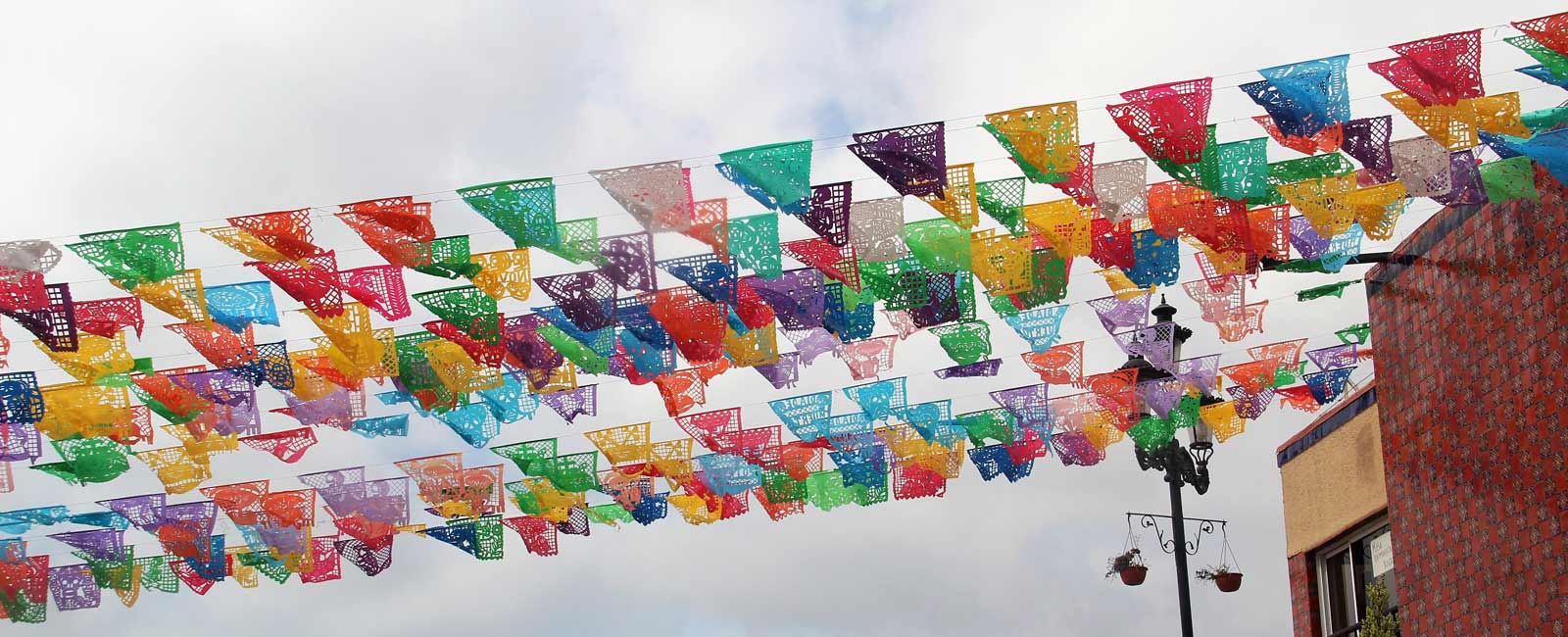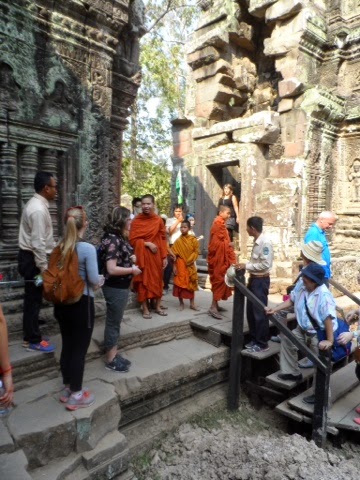
Francis Parker Exploring Southeast Asia
Saturday, Feb.14: Witnessing the Realities of Cambodia
Our group awoke at around 6:30 to have our first breakfast at the Metta Karuna Center. We shared a buffet-style meal, with baguettes, assorted jams, bannanas and packaged ramen soup. After we all stuffed ourselves with food, we hopped on a bus headed for Banteay Srei, an old temple of almost a thousand years. On the way we passed by small shops with patchy areas of palm trees growing around them. These shops sold many of the same items, which were evidently catered towards tourists. The products consisted of many woven coasters and boxes, bowls and wooden tableware. The vast majority of our group purchased the sweet palm sugar chunks, after having sampled them. They were intensely sweet and buttery, dissolving in our mouths.
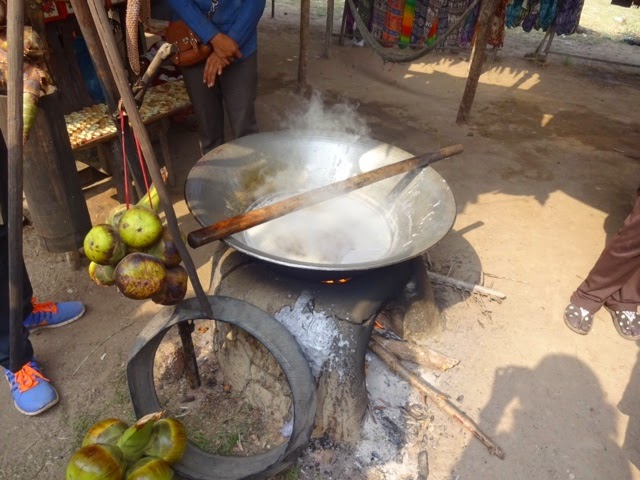
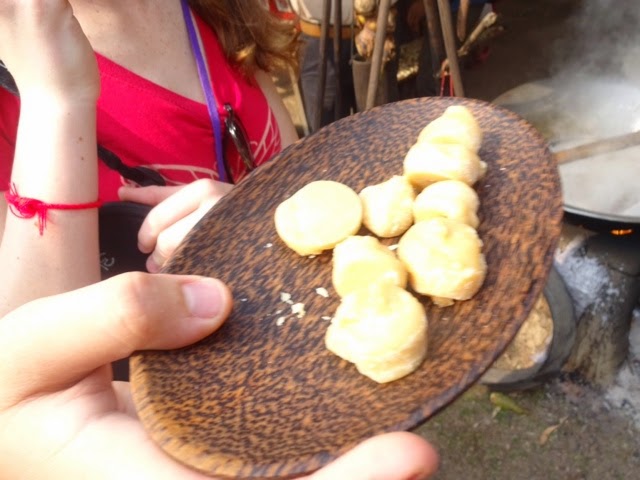
Once we arrived at the temple, we learned from our tour guided, Mr. Yut, that the temple was built, designed and carved entirely by women. Observing the many small inscriptions and depictions, we soon realized the skill and the patience that went into this beautiful structure. The temple was constructed and finished by two Angkorian kings, King Rajendravarman and King Jayavarman V. The first king began this project and funded it, with his successor, Jayavarman V, supposedly appointing women as laborers. The intricate and delicate carvings and the small doorways were thought to be too beautiful to have been carved by men. Although this is just a myth, many women did play an evident and important role in Angkorian society. In wartime, for example, they joined in as fighters; they used this temple to pray for luck and victory before battle.
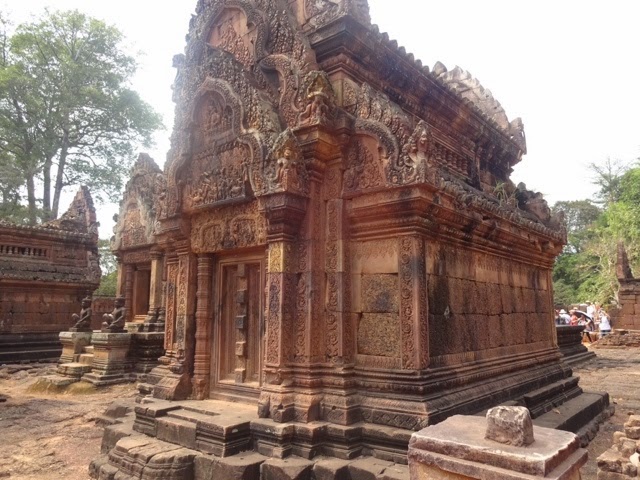

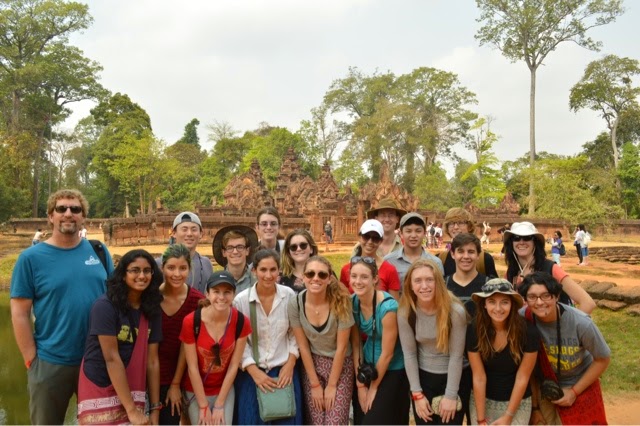
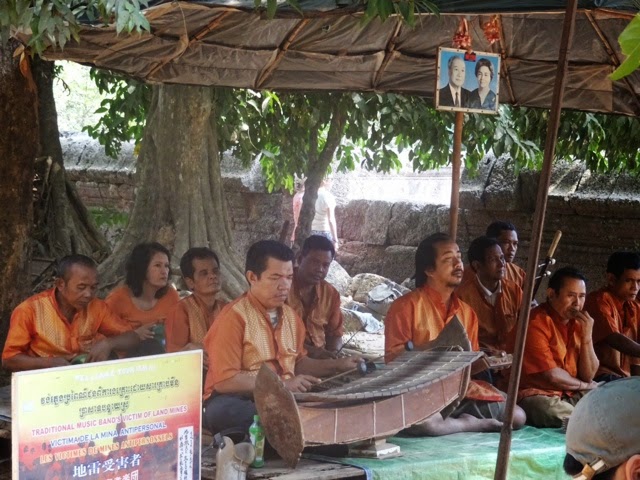
Many children crowded around us as we exited the temple. They held postcards, wooden flutes and other souvenirs. This is a very controversial subject in Cambodia. Many people would have problems with children selling goods to support themselves and their families; however, the parents also exploit their children to conjure sympathy from tourists. Even though we cannot help feeling sympathy for the kids, it is nonetheless a prevalent issue.
After leaving the temple, we visited the Cambodian Land Mine Museum. This museum explained a lot of the horrors that still occur frequently in Cambodia. Many of these victims are children. Some of these children wounded and disabled by these mines have become workers in the effort to clear mines in Cambodia. This effort and museum were greatly influenced by Aki Ra, a former child soldier in the Khmer Rouge, and Bill Morse, an ex history teacher from California. In Cambodia an average of three casualties a week are caused by land mines. This devastation was caused by the U.S., the Soviet Union, and China, who supplied the Khmer Rouge and Cambodian armies as well as the Vietnamese. The complicated web of weapons deals and inner conflicts of Cambodia and Vietnam led to the scattering of billions of tons of mines and bombs in Cambodia. An incredibly shocking and heartbreaking thing Bill explained to us was that young kids would find these mines and cluster bombs not knowing what they were and would pick them up seeing them as interesting shiny objects–the result is obvious. This lack of knowledge is consistantly troubling for the demining of Cambodia, as many outer villages in the forest are uneducated about the dangers and are difficult to get to because of the land mines surrounding them. Many of these victims suffer from PTSD, which is not treated by the NGO. These ongoing tragedies show a harsher and darker side to present Cambodia. Not only are we reflecting on the ancient Buddhist civilizations in Cambodia, but also we are confronting the current events of Cambodia.

After having eaten lunch, we headed for the Ta Prohm temple, a famous and world renowned temple used in such films as Tomb Raider, featuring Angelina Jolie. The temple itself was captivating, as we all witnessed the natural phenomenon of the native banyan trees growing through the temple’s foundation. Another interesting phenomonon about Prohm is the discovery of a stegosaurus carving in the walls of the temple. We aren’t sure if this is just a coincidence or if it speaks to us about the ancient civilization’s scientific advances. It is just another unique element that adds to the wonder of the temple. The temple was built in the early eleventh century as a place of worship for Buddhists. However, by the thirteenth century, the new king imposed a new system of Hindu beliefs on the kingdom, changing the temple from Buddhist to Hindu. The thousand carvings of Buddha were defaced and changed to phallic symbols called Shiva lingam.
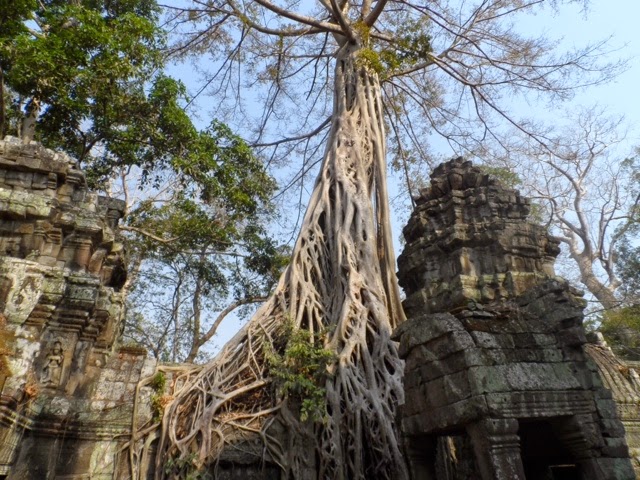
One of the amazing aspects of this temple is that it rises magnificently out of the grey rubble and temple ruins. Efforts are being made to restore the temple to its former state. This can be seen as controversial because some believe that the temple should be left to crumble naturally, while others believe that it should be held together to preserve its glory. Photographed by senior Karina Dominguez.
After dinner, we took tuk tuks to an outdoor shadow puppet theater. We watched the performance of the Indian epic Ramayana. The shadow puppet artists used leather silhouettes and incorporated dance movements to act out certain sections of the epic. Unfortunately, the performance was cut short due to an unexpected (and pleasantly refereshing) rain shower. Our curiousity about the ending of the story was satisfied when junior Snigdha Nandipati told the rest of us about the part that we sadly missed.
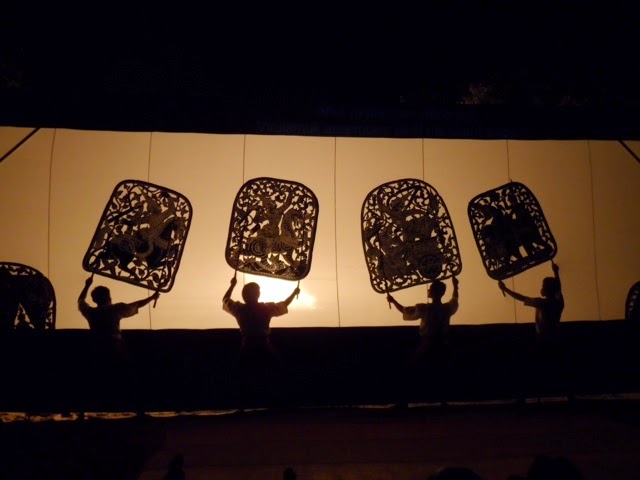
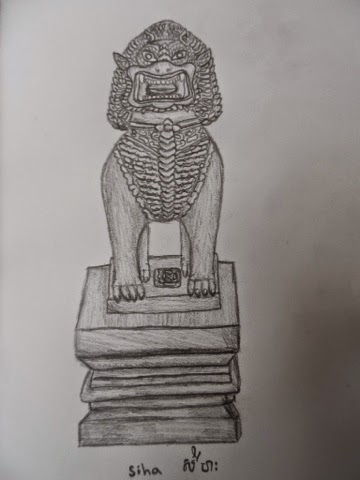
–Mitchell Capp, Snigdha Nandipati, Angelica Vera
